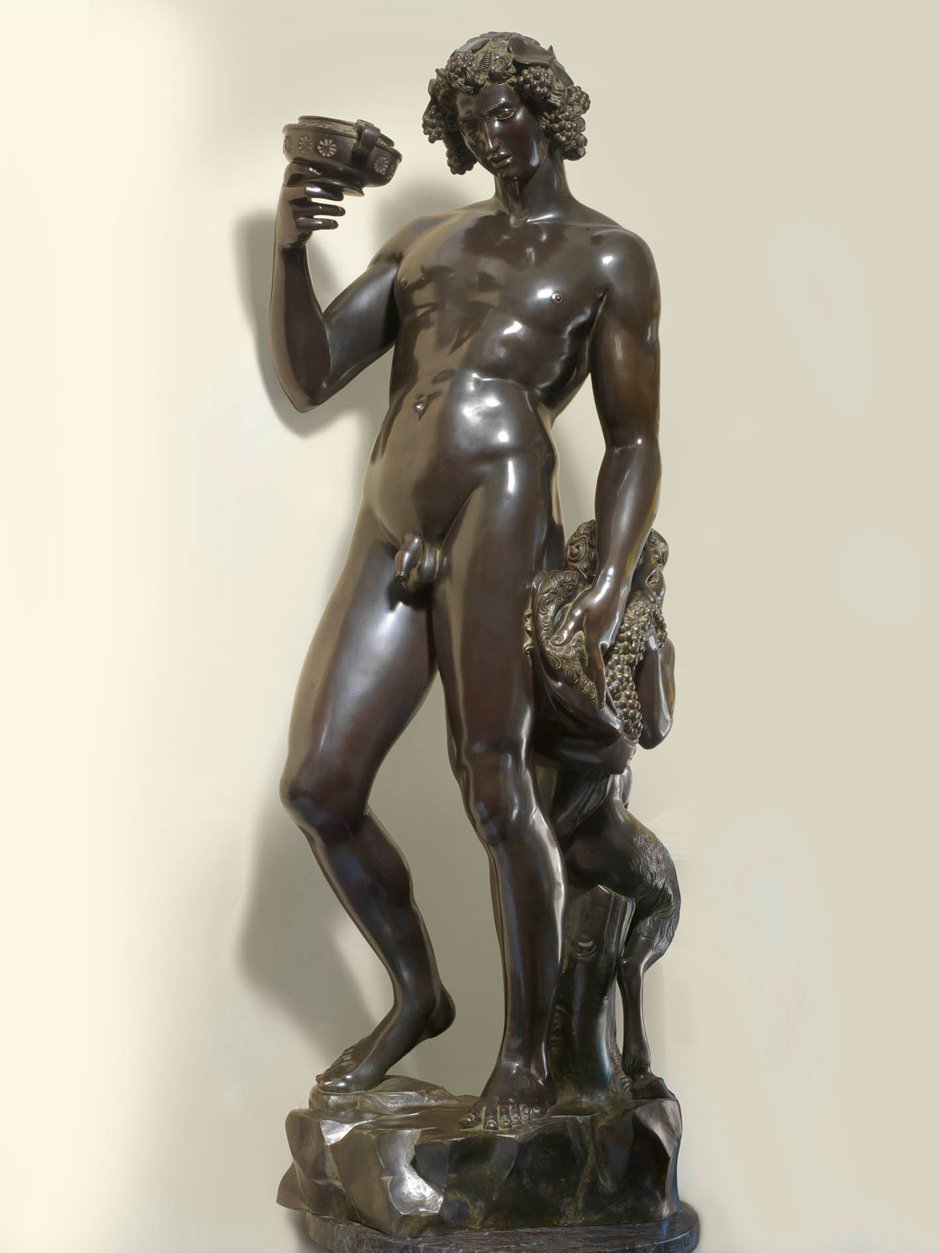Bacchus (1497; height 78 inches)
Nothing about the Bacchus is conventional. Michelangelo surpassed his Classical models by imbuing idealized forms with a brutal realism. The face of Bacchus is reminiscent of an antique mirthfulness, but the eyes are fixed lasciviously on the cup, which contains the elixir he invented. Instead of a sober god identified by his attributes of a drinking cup, grapes, and leaves in his hair, Michelangelo depicts a reeling, indecorous drunkard staggered by the effects of wine. The god’s disequilibrium both captures and spoofs the contrapposto stance of the Classical sculptors. The Bacchus presents a portrait whose full depth cannot be understood until the statute is viewed from every angle, in the round.
The vintage sculpture (in the collection of the Bargello Museum in Florence) dates from Michelangelo’s first visit to Rome at a time when he was immersed in the study of Classical sculpture. In 1496, one of his sculptures, “Sleeping Cupid,” was falsely represented as a Classical antique and sold to an important collector. Records show that from July 1496 to July 1497, Cardinal Raffaello Riario made a series of payments for this statue. However, records from 1506 show the sculpture as being in the courtyard of the banker Jacopo Gallo — and not in Riario’s possession. In any event, the scandal of a fake antiquity connected to Michelangelo led Cardinal Riario to arrange for the young master’s hasty departure for Florence.
As with most of the original plaster prototypes in the Marinelli collection, this one was made in the 1930s (1938 to be exact) with authorization from the Florentine Soprintendenza delle Belle Arti.

